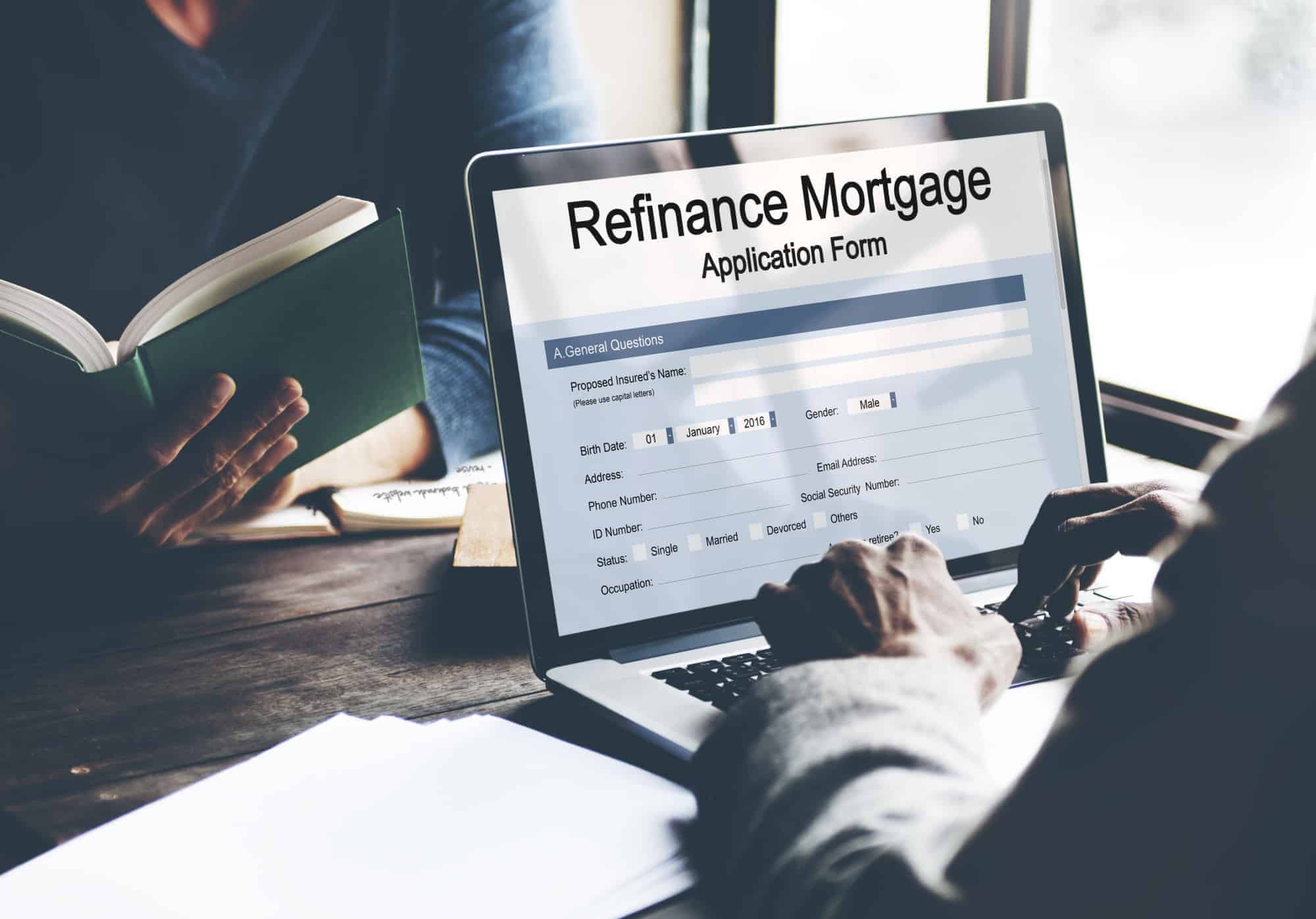The dream of homeownership creates a sense of pride, builds equity, and increases personal wealth for many. However, if you have an underwater home, it can be difficult to refinance to a lower rate. Thankfully, some programs offer a high LTV refinance option so you can get your mortgage back on track.
Read on to learn more about what’s currently available so that you can refinance your home regardless of how much equity it holds.
What is a High LTV Refinance Option?
Lenders want their property to have a fair amount of equity for them to be considered smart investments. For most, you need an LTV or loan-to-value ratio of around 80% or less to refinance.
Unfortunately, some homeowners have a higher LTV, which can be a disadvantage, particularly if you’re planning to sell or refinance your home. Fortunately, there are some high LTV refinance programs available that will allow you to refi your home at a lower rate, even if you’re currently underwater.
With a high LTV refinance option, you can get a better rate and lower mortgage payments, even if your LTV is considered high. Thanks to these programs, you can start to build equity again and reap the benefits of a lower interest rate at the same time.
When you have a high LTV, your loan amount is more significant than your home’s actual market value. This can make refinancing difficult since many lenders won’t refinance without the right level of equity already confirmed via an appraisal. However, that doesn’t mean that you don’t have any options.
Fast Facts
The HARP 2.0 Program expired in December of 2018, which was designed to help people whose homes are underwater refinanced their mortgage into a more reasonable loan with lower payments. Since the program ended, there have been a few new options to take its place.
These new programs still allow you to refinance, even if you’re incredibly underwater on your home, as long as you prove that you can afford the new payment. In some cases, you might not even need a new appraisal or even a minimum credit score. The guidelines vary, but we’ll delve into those requirements below.
The purpose of the HARP replacement programs is to help those homeowners who are struggling with their monthly payments. It also allows them to start building equity, which makes owning a home much more appealing and financially viable. Thanks to more relaxed guidelines, refinancing is easier for those who might not be able to refinance using a traditional mortgage program.
How do You Qualify for a High LTV Refinance Option?
Before you apply for a refinance, you’ll need to know if your mortgage is eligible, and if you qualify for one of the HARP replacement programs. These programs focus on your payment history and your ability to afford the new payment more than your credit score and debt-to-income ratio.
Most banks, mortgage brokers, and credit unions offer these programs to homeowners. Talk to your current lender to find out if they provide the program, and you can shop around. Feel free to browse for the best rate and the lowest closing costs to save even more.
Freddie Mac offered a HARP replacement program called FMERR, which expired in September of 2019. Today, you can use Fannie Mae’s High LTV Refinance Option, or HIRO to get a lower payment and lower rates. If Fannie Mae owns your loan, you may qualify for this new program.
Even if your loan was not directly approved or purchased through Fannie Mae, the organization might still own your mortgage. Find out if your loan qualifies by asking your mortgage servicer.
Guidelines
The guidelines to qualify for this program are relatively simple. First, your original mortgage must have closed on or after October 1, 2017. Next, your current loan cannot be a HARP loan, so if you already modified your mortgage using HARP in the past, you will not qualify.
Your current loan must be at least 15 months old for the high LTV refinance option. You must have closed at least 15 months or more on your existing mortgage before you can apply. Also, your mortgage must be current and not delinquent.
The lender will look at your payment history to determine eligibility. You cannot have any missed payments within the last six months and no more than one 30-day late payment within the last 12 months.
Some borrowers may qualify for a refinance without the need for a new appraisal. This factor will vary depending on the lender, your current market, and other individual circumstances. If the lender determines that you can handle the new payments and you meet the other requirements, you should have no problem getting your refinance approved.
There is no minimum credit score required to qualify for the high LTV refinance option. However, the lender will still pull your credit report to confirm that you’re making your other payments on time.
Your lender will also confirm that you’re currently employed to ensure that you’re capable of repaying your loan. There is no maximum debt-to-income ratio requirement, which also makes it easier for many borrowers to qualify. As for your LTV, for a primary residence, it must be 97.01% or higher for the program.
Is a High LTV Refinance Option Legit?
You may wonder if participating in the high LTV refinance program is legitimate, or if it’s even beneficial. The program offered by Fannie Mae is entirely legit, as long as you qualify and meet the eligibility as mentioned earlier guidelines.
If you’re not certain about applying for this program, talk to your lender, credit union, or bank. They can confirm if your current mortgage qualifies and will walk you through the process.
If you’re concerned about meeting your monthly mortgage payments or you’d like to rebuild the equity in your home, this option is certainly worth the time and effort. Always go through a qualified lender when applying for this refinance program.
A mortgage broker can also help you find a lender with the best rates to save even more. Don’t be afraid to ask questions and find out if you’re dealing with a qualified lender or broker.
What Are the Borrower Benefits of a High LTV Refinance Option?
There are many benefits to applying for a high LTV refinance. First, you’ll be able to secure a lower rate, which means you’ll also have lower monthly mortgage payments. With low interest rates, it’s a great time to refinance your home.
When you have lower payments, you’ll be able to free up cash flow for other expenses. It also makes it much easier to pay your mortgage, which can reduce stress and strain your finances and well-being.
You may also get a shorter loan term, which means you can pay off your home faster. You can also refinance your ARM or adjustable-rate mortgage into a fixed-rate plan, giving you stable payments and financial stability for the remainder of your loan.
The refinance process is much faster with a high LTV program. Since there is much less documentation and possibly no appraisal required, the time to close should be shorter than it is with a traditional refinance. Relaxed guidelines like no minimum credit score and no maximum debt-to-income ratio also help speed up the process.
Electronic and manual underwriting options are available for this program, but it depends on the lender or servicer. You can shop for the best rate on your LTV mortgage as long as you’re choosing lenders that participate in the plan.
It’s important to note that if you currently have PMI (Private Mortgage Insurance), it must be transferred to your new loan. However, if you don’t now have PMI, you will not need it for the new loan.
What are the Loan-to-Value (LTV) Guidelines for the High LTV Refinance Option?
Fannie Mae has specific guidelines for their high LTV program. You may refinance a single-family home, a home with two to four units, an investment property, or a second home, as long as they meet the requirements.
In terms of your loan-to-value ratios, single-family homes must have an LTV of 97.01% or higher. For residences with two units, the LTV can be 85.01% or higher, and it must be 75.01% or higher for three to four units.
For a single-unit second home, the LTV must be 90.01% or higher to qualify. For investment property, your loan-to-value needs to be 75.01% for one to four units.
Depending on your situation, you may be eligible to receive an appraisal waiver. This means you’ll have lower closing costs since a property appraisal typically costs from $300 to $400 or more. Ask your lender about an appraisal waiver to help you save even more money.
The high LTV refinance option only allows you to get a rate and term refinance. This means you won’t be able to get any cash from the refinance, which only changes the interest rate and loan length of your mortgage. In some cases, you might be able to finance up to $5,000 of your closing costs into the new loan and receive up to $250 in loan proceeds.
Aside from closing costs, there should not be any additional fees to participate in the program. Do not accept any additional fees from your lender besides the standard closing costs. Some lenders may also offer you $500 in assistance to help pay for closing costs and up to $2,000 to reduce your mortgage’s total balance.
Is Mortgage Insurance Needed?
Any mortgage with an LTV of 80% or higher must include PMI or Private Mortgage Insurance. This is standard for both government programs and mortgages through Fannie Mae and Freddie Mac.
If you currently have PMI on your mortgage, you’ll be required to have the same level of coverage on the new loan. If your existing mortgage does not have PMI, you won’t be required to pay it on the new loan. This applies even if your original LTV ratio is higher than 80%.
You will not be able to change from lender-paid PMI to borrower-paid PMI when you refinance. Ask your mortgage broker, bank, or credit union for more information or have additional questions about mortgage insurance.
Before you apply for this or any refinance program, it’s essential to do a little homework. Check your credit scores and take a closer look at your mortgage balance. You can also go online and use a loan-to-value calculator to help you determine your home’s current LTV.
It’s an excellent time to refinance if rates are low, you’d like lower monthly mortgage payment, or you’re ready to build equity in your home. A long as you qualify, the high LTV refinance option can give you financial freedom and a more manageable mortgage.
Refinance with a High LTV
Now that you’re familiar with the high LTV refinance program offered by Fannie Mae, you can save money on your home, even if it’s currently underwater. Take advantage of low rates and experience greater financial freedom with a refinance program that works for you.
If you’re second-guessing this program, reach out to your current loan servicer, a local credit union, bank, or mortgage broker. They can help answer any additional questions you have and run the numbers to determine if this program will help you gain equity and enjoy the benefits that homeownership provides.



